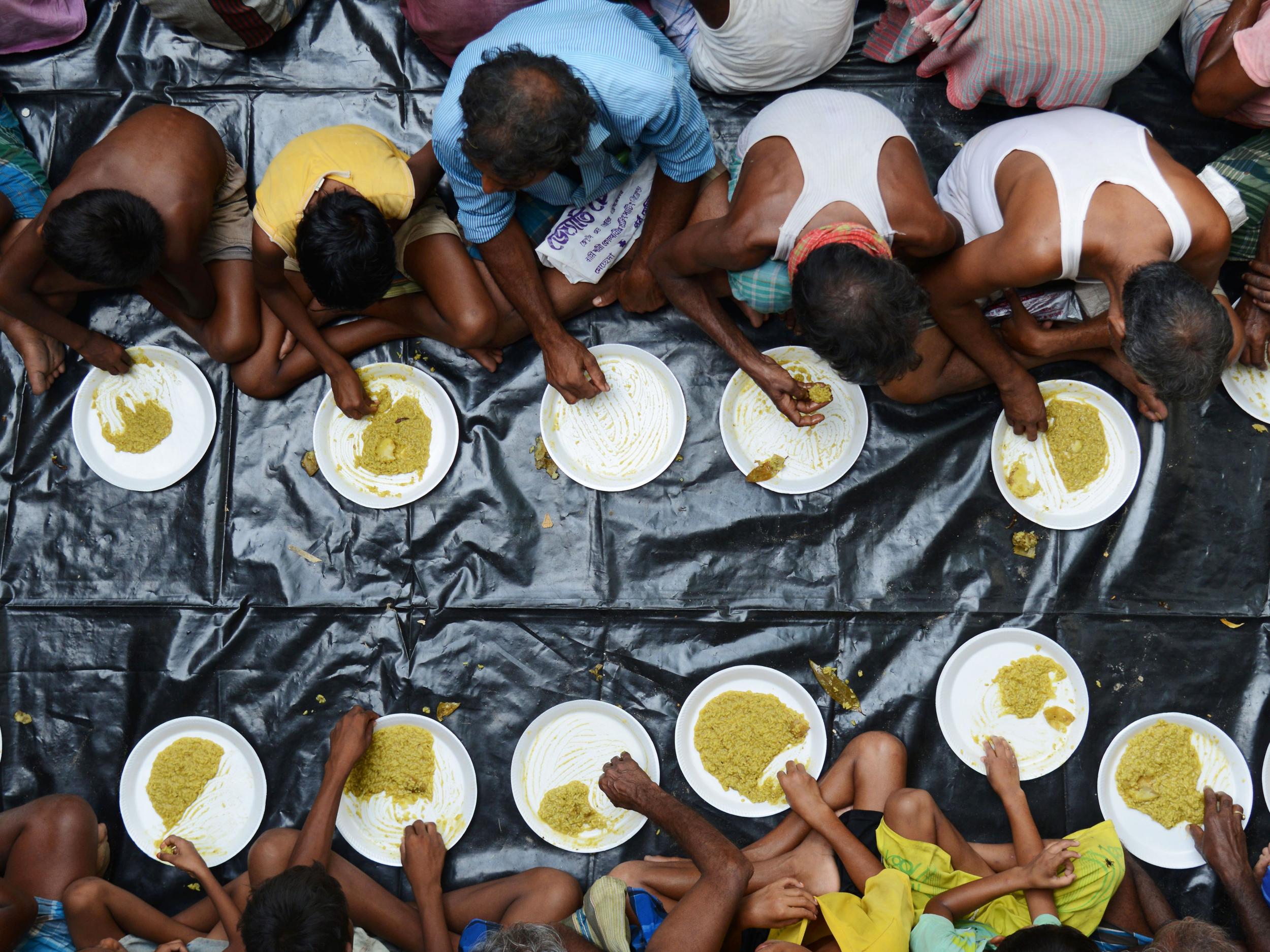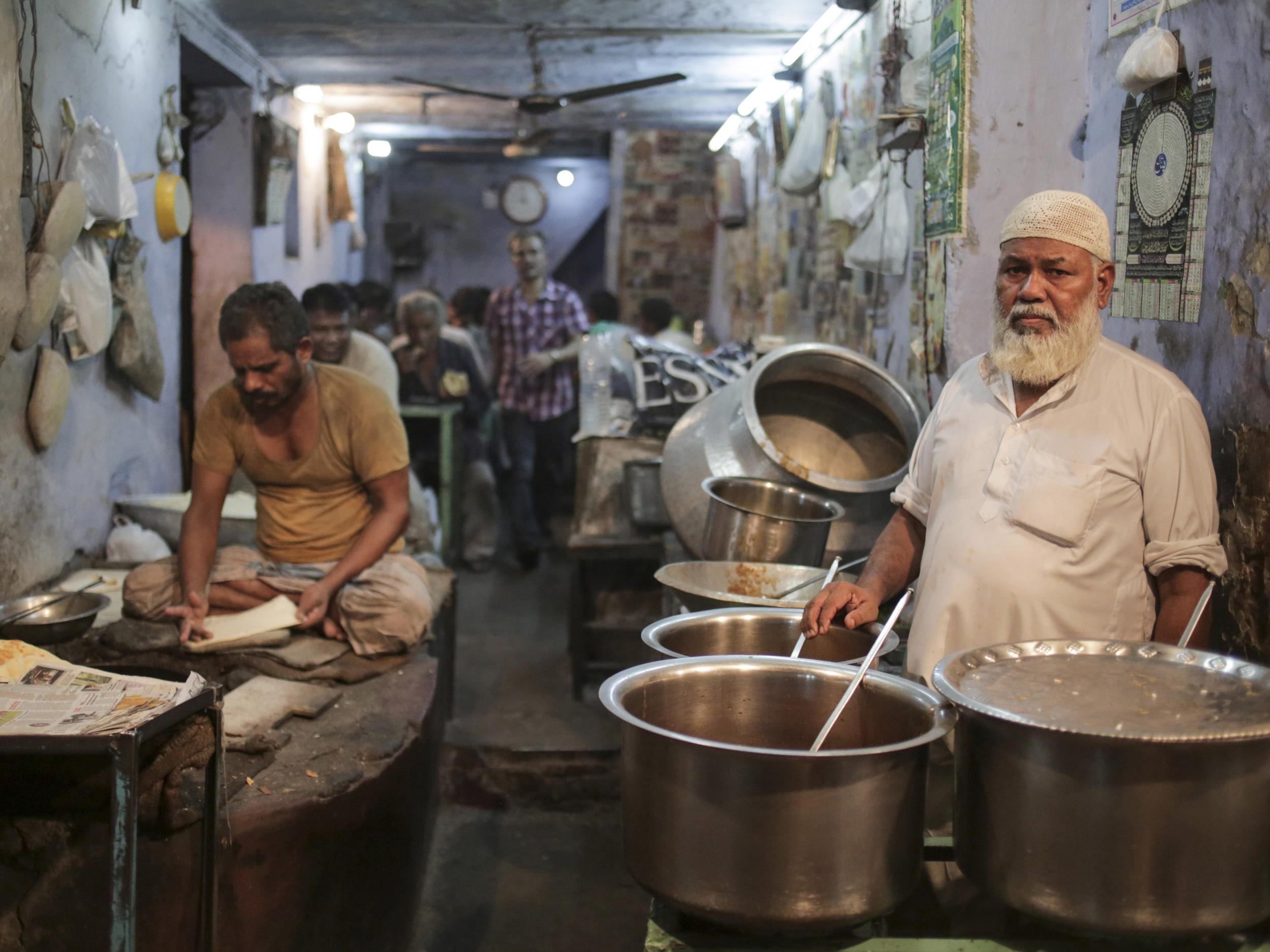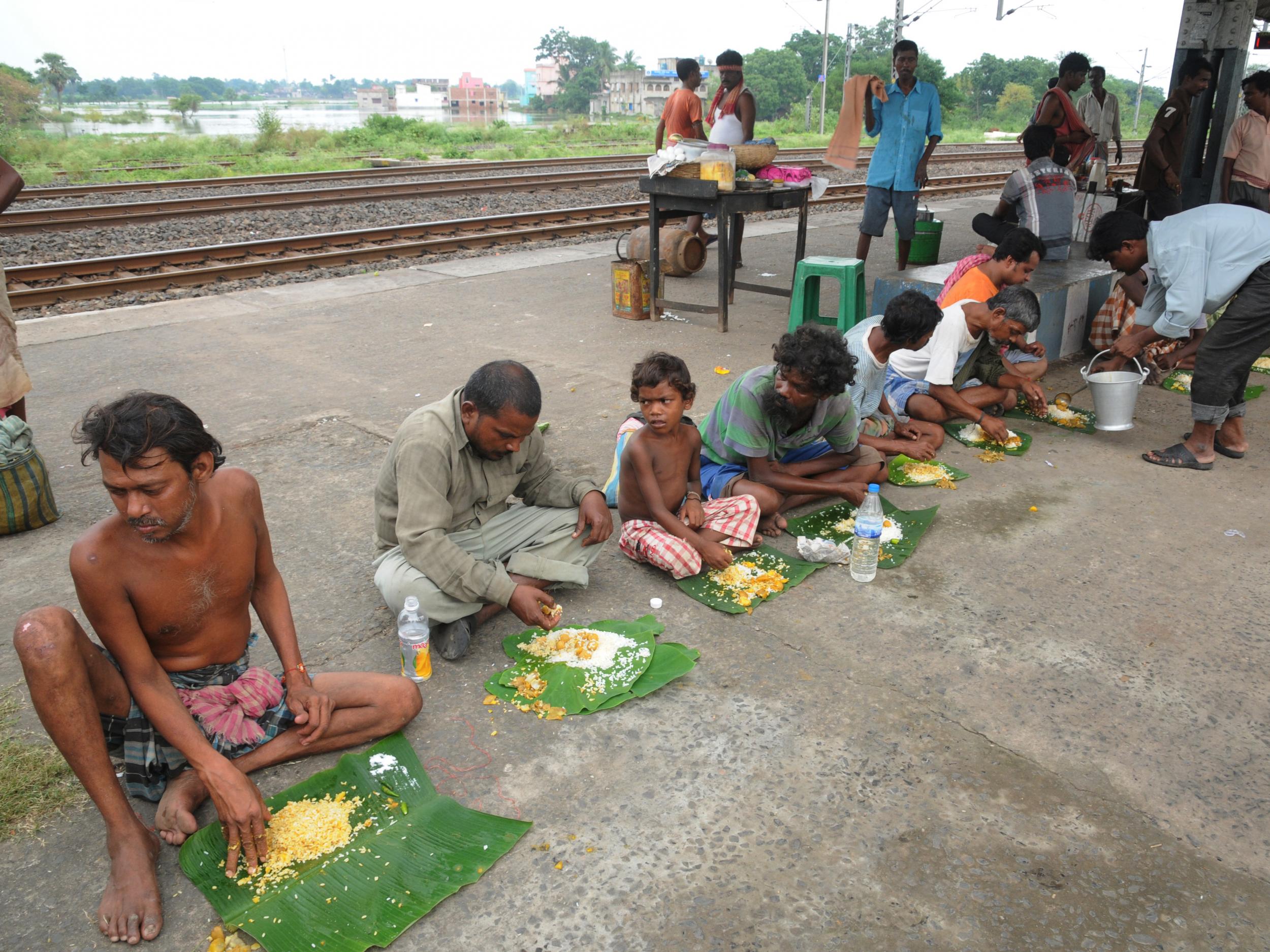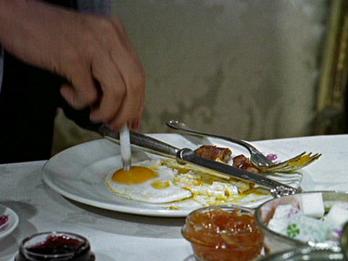The rituals of dinner: How food can divide us
Can food be used to create social barriers? Of course it can, finds Margaret Visser, and where better to look for evidence than India, where what you eat and how defines your status

Your support helps us to tell the story
From reproductive rights to climate change to Big Tech, The Independent is on the ground when the story is developing. Whether it's investigating the financials of Elon Musk's pro-Trump PAC or producing our latest documentary, 'The A Word', which shines a light on the American women fighting for reproductive rights, we know how important it is to parse out the facts from the messaging.
At such a critical moment in US history, we need reporters on the ground. Your donation allows us to keep sending journalists to speak to both sides of the story.
The Independent is trusted by Americans across the entire political spectrum. And unlike many other quality news outlets, we choose not to lock Americans out of our reporting and analysis with paywalls. We believe quality journalism should be available to everyone, paid for by those who can afford it.
Your support makes all the difference.
Pollution has always meant matter out of place, and rules broken. The threat of pollution has therefore been a powerful sanction for the rules and the categories by which a society organises its life. Where there is a strong desire for clarity, for keeping people carefully in “their proper place”, barriers are set up between societies and social classes, and the barriers are commonly “manned” by fears of pollution, which automatically infects anyone who tampers with the arrangements. Physical contact is an essential part of ideas about pollution: at their most direct, such laws achieve the desired avoidance and distance through the command, “Don’t touch!” Eating food, cooking it, serving it, sharing it out, and passing it to others requires intensely intimate contact, both with the food and with the dinner companions.
The most famous and most complex examples of pollution-protected eating are to be found in India. There, social groups are set apart by what they eat. If one society loves chicken, and another abominates it, an effective barrier is erected between those groups: it is hard to draw close to someone with whom one never eats, and whose eating habits one finds unacceptable. On the other hand, the people who do eat chicken together identify themselves and one another thereby, and that symbol, interlocking with others, leads them on to discover how much more they have in common.

In India, where the caste system divides groups of people from other groups, eating rules sort people out and determine whether they are “high” or “low” – from the point of view of caste, and not necessarily of power – in relationship to one another. A person acceptable at one’s table is also someone whose family might be eligible for alliance through marriage. Rejecting an offer of food is a sign of superiority towards the would-be giver – and it inevitably means that no daughter or son of the refuser could conceivably marry a child of the refused. It follows that weddings involve the powerful drama of families ceremonially and publicly eating together, with the bride and groom, and other members of their respective families, solemnly exchanging and eating pieces of food.
It is interesting to notice that, in India as elsewhere, purity is a state of being, and utterly passive – it can be lost, but not transferred, and it is powerless in the face of the impure. Pollution may be removed once it is incurred, and purity regained, by means of washings and other rituals. Also, the more intimate people habitually are, the less they pollute one another: they “belong together,” and pollution is a separating mechanism. In India, the most ordinary everyday food is boiled rice – to which the most pollution danger attaches. Boiled, fatless, ordinary meals called uta are from this point of view kacca, or “imperfect”; you would tend to avoid eating these with strangers.
Fried tindi or “snacks” are pukka, “perfect”: they are purified by sacred butter (ghee), less liable to impurity, and therefore more “public” fare. Also, it matters desperately who cooks one’s meal, for cooks touch pots, bowls, and the food itself. (They avoid tasting it, however, and learn to test doneness with their fingers and by smell.) When a Brahmin gives a feast and wants as many people as possible to come, he chooses a menu of pukka food and cooks it himself, for his touch can pollute nobody.
For those who enjoy commensality, table manners decree that food should be passed to people higher than oneself with the right hand only. A woman may eat with her left hand and so symbolise her “female”, left-handed status; but she passes food with her right. Cups containing liquid may be correctly held in the left hand. Everyone must sit or squat on the ground; they must on no account stand, walk about, or lie down. Even the direction one faces is filled with symbolism relating to purity: looking east is purest, and most honourable, and no one whose parents are alive should be expected to face south. Washing, both before eating and afterwards, is meticulous; one’s eating clothes must be absolutely clean, and bone dry. Dish washing is performed before the meal, not after: plates are most safely leaves, washed before use and discarded afterwards. It is dreadful to eat from a broken or impure vessel, or when one is suffering indigestion from a previous meal, or to eat too late, too early, or too much. People prefer not to eat in the open for this exposes food to unbounded social surroundings.

Eating boiled-rice-based meals with the hand is dangerous because fingertips and leaf plates are unavoidably touched and therefore defiled by saliva. The correct way to take food to the mouth is to grasp a small amount of it from above, pinching it with the fingertips. Food should never be scooped up, for then one would be eating – perhaps even licking – out of the hand, which is impermissibly defiling. Snacks, or tindi (fried morsels, dried fruits, sweets), can be – even though they often are not – tossed into the mouth so that there is no hand contact with the lips; this makes them safer than the relaxed, familial uta. If tindi items are too large to eat in one mouthful they should be broken, not bitten, because of the saliva. This is the reason why cooks cannot taste food, but must press and pinch it to see if it is done.
Exotic as many of these rules might seem to Westerners, several of them are reflected in our own manners codes. We have looked briefly at how “good manners” have served in our own society to sort out the “refined” from the “gross,” the “base-born” from the “well-bred.” We call some of our reasoning “hygiene,” but then dirt – matter “out of place” – is always a form of pollution. We are revolted, for example, by a fly in the soup; we are even likely, as one experiment demonstrated, to reject food that has been stirred with what we know to be a brand-new, unused fly-swatter. Alfred Hitchcock created a memorably nasty moment in 1955’s To Catch a Thief (it is a film with many food-pollution devices) when Mrs Stevens stubs out a cigarette in a fried egg. The audience invariably cringes with disgust.
Smoking used to be forbidden at the table mostly because it offended against gourmet standards, ruining the “palate” of the smoker and the aroma of the food for everybody. Now, smoking commonly evokes what can only be called pollution reactions, including disgust and a fear of infection and contagion.
We are proud of expecting cleanliness at table, and love insisting that our standards in this regard have been raised considerably, and relatively recently; they are proofs, for us, of a typically Western concept, that of “progress.” An 18th-century lady is said to have sat at dinner with filthy hands: we are given to understand that she had not adapted her old-fashioned aristocratic mores to the new standards of hygiene. When someone remarked on the grubbiness of her fingers, she is supposed to have coolly replied, “Madam, you should see my feet!”
Bodily propriety with us includes consideration for others, and for the disgust they might easily (and rightly) feel: we agree with them, and would be similarly disgusted if they were the ones guilty of bad manners. Insisting on the rules protects the group, one and all. We raise the disgust threshold even higher by insisting that everyone should avoid not only doing anything likely to disgust others, but also mentioning anything disgusting.
“As you would not bring upon the dinner or tea table anything which would affect the company unpleasantly,” says the author of the anonymous American Illustrated Manners Book in 1855, “so you have no right to mention it.” He or she goes on to list unmentionable subjects: details about diseases, operations one has undergone, battles and wounds, personal injuries, and deformities; these “wound the feelings, hurt the appetite, or impede digestion.” Violence, once again, is too “close to the bone” at table. Less squeamish as we are in certain respects today, the stricture against lurid descriptions of gore and putrefaction still stands; we can expect listeners to such tales to be “put off their food.” Accusatory and suggestive remarks about the food are also to be discouraged. The same 19th-century author gives as an example of tactlessness the story of a vegetarian lady who “characterised mince pie as ‘chopped corpse and apples’.”

“You will do well,” the writer goes on, “not to be talking of dogs when people are eating sausages”. Nor should one bring up the subject of cats when eating rabbit (presumably because sausages and cooked rabbit look as if they might be cooked dog and cat). We still hate having personally known an animal we are eating, and we even hate imagining that we might have known it.
Dogs and cats are pets, and in a sense taboo: they are placed in a completely different category from animals we designate as to be “raised for” meat. We dislike thinking that we can have no idea what went into a sausage. Twentieth-century people feel so strongly about this that we have created unprecedentedly strict regulations governing such conglomerates as sausage meat; we prefer in any case not to speculate about what a sausage must once have been, especially while eating it.
Finally, the author of the manners book humorously advises us “to skip this paragraph if you are reading aloud in company”: laws have, unfortunately, to mention what it is that is forbidden. We do recognise a difference between polite “delicacy” and real danger, however – between fear and disgust. This is brought out in the advice of Madame la comtesse de B, author of Du savoir-vivre en France (“On French Etiquette”, 1814): “Do not mention any caterpillars you may find in the salad, but do not hesitate to complain if there is glass or a pin in it.”
The rule that diners should try not to offend means also that one should never behave oddly at table – not cut bread into strange shapes, show an excess of finickiness, wildly gesticulate, perform movements with too much elaboration. The idea is that one should not draw attention to oneself, and especially to one’s manner of eating; it makes people feel insecure and distracts them from the conversation. If anything goes wrong, polite consideration enjoins that we should pretend it has not happened – for instance, if someone were suddenly to belch. It would even now be a singularly intimate gathering where jokes or other remarks could be exchanged about someone having belched.
The need for a polite facade is said sometimes to lead to a concerted covering up of faux pas, as when the host drank the fingerbowl water because the ignorant guest had done so, or when a visiting foreigner ate his asparagus tips and threw the ends over his shoulder: the Parisian convives all did the same in order to preserve him from the embarrassment of perceiving that his behaviour had been improper.

Such events can never have been common, but they do form part of the mythology of etiquette; they are like small-table dramas, complete with audience (us), hero, unpredictable visitor, chorus, and triumphant but civilised containment in a hilarious and satisfying climax. In fact, foreign guests have usually been expected to watch and follow the manners of their hosts, and it has always been possible and indeed courteous to explain one’s customs to visitors.
Occasionally we come across stories told about an impossibly arrogant guest, such as the Chinese warlord who was confronted for the first time with a banana, and ate it with its peel on. His host, to show him how it was done, conspicuously (but silently) peeled and ate his banana. The unregenerate guest grabbed another and said, “I always eat these things with the peel on,” then proceeded to eat the second banana the same way he had the first.
Aspiring entrants to exclusive clubs are sometimes tested by being invited to dinner, to have their table manners scrutinised by the members who already belong: we cannot allow anyone into our solidary and frequently commensal group who does not “behave.” It is said that at trial dinners like those for new Fellows at All Souls’ College, Oxford, what examiners look for is not only knowledge of how to behave, but the correct ease and confidence of manner when unforeseen problems arise.
A person on trial might, for instance, be given olives or cherries to eat but no plate for the stones. Approval is given not only for knowing that cherries and unsauced olives are correctly carried to the mouth with the fingers, but that pips (having been politely, that is, unobtrusively, ejected from the mouth into a covering right hand) can be laid on the table – provided that the action is performed calmly, with assurance, and without interrupting the flow of conversation.
Join our commenting forum
Join thought-provoking conversations, follow other Independent readers and see their replies
0Comments